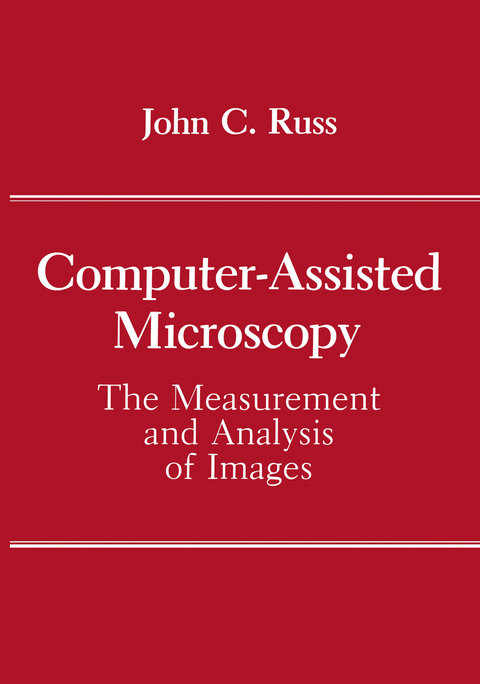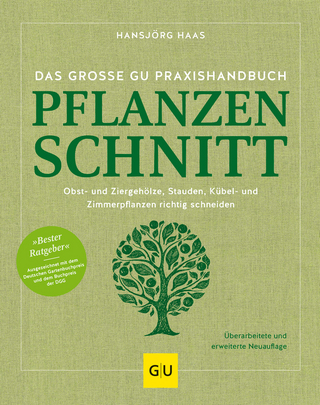
Computer-Assisted Microscopy
Springer-Verlag New York Inc.
978-1-4612-7868-9 (ISBN)
1 Introduction.- The importance of images.- Why measure images?.- Computer methods: an overview.- Implementation.- Acquisition and processing of images.- Measurements within images.- More than two dimensions.- 2 Acquiring Images.- Image sources.- Multi-spectral images.- Image sensors.- Digitization.- Specifications.- References.- 3 Image Processing.- Point operations.- Time sequences.- Correcting image defects - averaging to reduce noise.- Reducing noise in a single image.- Frequency space.- Color images.- Shading correction.- Fitting backgrounds.- Rubber sheeting.- Image sharpening.- Focussing images.- References.- 4 Segmentation of Edges and Lines.- Defining a feature and its boundary.- Roberts’ cross edge operator.- The Sobel and Kirsch operators.- Other edge-finding methods.- Other segmentation methods.- The Hough transform.- Touching features.- Manual outlining.- References.- 5 Discrimination and Thresholding.- Brightness thresholds.- Thresholding after processing.- Selecting threshold settings.- The need for automatic thresholding.- Automatic methods.- Histogram minimum method.- Minimum area sensitivity method 1ll.- Minimum perimeter sensitivity method.- Reproducibility testing.- Fixed percentage setting.- Color images.- Encoding binary images.- Contiguity.- References.- 6 Binary Image Editing.- Manual editing.- Combining images.- Neighbor operations.- Skeletonization.- Measurement using binary image editing.- Covariance.- Watershed segmentation.- Mosaic amalgamation and fractal dimensions.- Contiguity and filling interior holes.- References.- 7 Image Measurements.- Reference areas.- Boundary curvature.- Feature measurements.- Perimeter points.- Length and breadth.- Radius of curvature.- Image processing approaches.- Counting neighbor patterns.- Shape.- Cornersas a measure of shape.- Harmonic analysis.- Position.- Neighbor relationships.- Edge effects.- Brightness.- References.- 8 Stereological Interpretation of Measurement Data.- Global measurements.- Global parameters.- Mean free path.- Problems in 3-D interpretation.- Feature specific measurements.- Distribution histograms of size.- Interpreting distributions.- Nonparametric tests.- Cumulative plots.- Plotting shape and position data.- Other plots.- References.- 9 Object Recognition.- Locating features.- Parametric object description.- Distinguishing populations.- Decision points.- Other identification methods.- An example.- Comparing multiple populations.- An example of contextual learning.- Other applications.- Artificial intelligence.- References.- 10 Surface Image Measurements.- Depth cues.- Image contrast.- Shape from texture.- The scanning electron microscope.- Line width measurement.- Roughness and fractal dimensions.- Other surface measurement methods.- References.- 11 Stereoscopy.- Principles from human vision.- Measurement of elevation from parallax.- Presentation of the data.- Automatic fusion.- Stereoscopy in transparent volumes.- References.- 12 Serial Sections.- Obtaining serial section images.- Optical sectioning.- Presentation of 3-D image information.- Aligning slices.- Displays of outline images.- Surface modelling.- Measurements on surface-modelled objects.- Voxel displays.- Measurements on voxel images.- Network analysis.- Connectivity.- References.- 13 Tomography.- Reconstruction.- Instrumentation.- 3-D Imaging.- References.- 14 Lessons from Human Vision.- The language of structure.- Illusion.- Conclusion.- References.- For further reading.
| Zusatzinfo | 470 p. |
|---|---|
| Verlagsort | New York, NY |
| Sprache | englisch |
| Maße | 170 x 244 mm |
| Themenwelt | Sachbuch/Ratgeber ► Natur / Technik ► Garten |
| Naturwissenschaften ► Biologie ► Allgemeines / Lexika | |
| Naturwissenschaften ► Biologie ► Botanik | |
| Naturwissenschaften ► Biologie ► Zoologie | |
| Naturwissenschaften ► Physik / Astronomie ► Angewandte Physik | |
| Technik ► Maschinenbau | |
| ISBN-10 | 1-4612-7868-6 / 1461278686 |
| ISBN-13 | 978-1-4612-7868-9 / 9781461278689 |
| Zustand | Neuware |
| Informationen gemäß Produktsicherheitsverordnung (GPSR) | |
| Haben Sie eine Frage zum Produkt? |
aus dem Bereich


